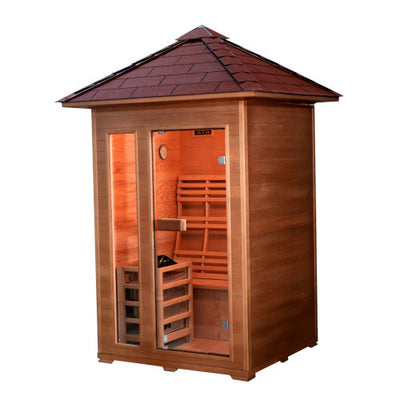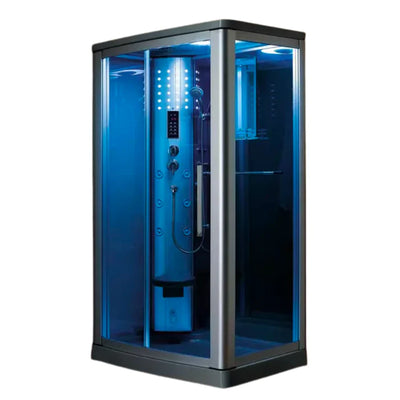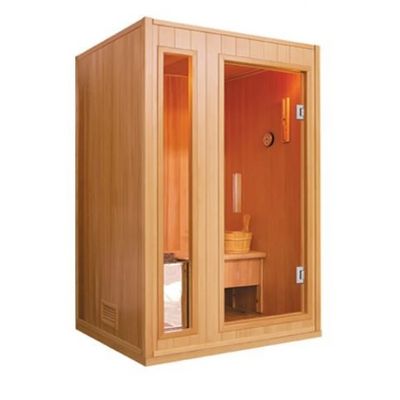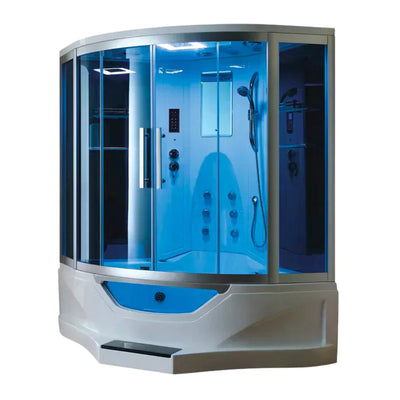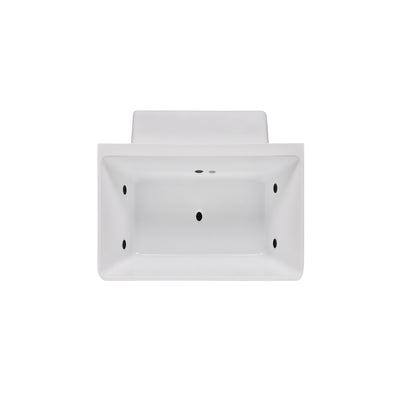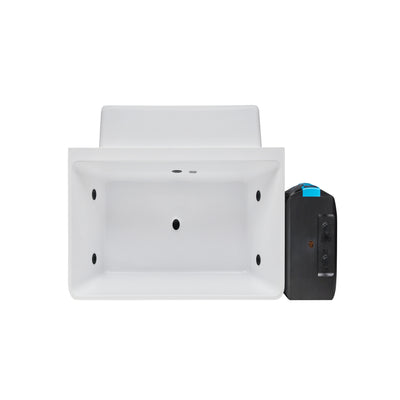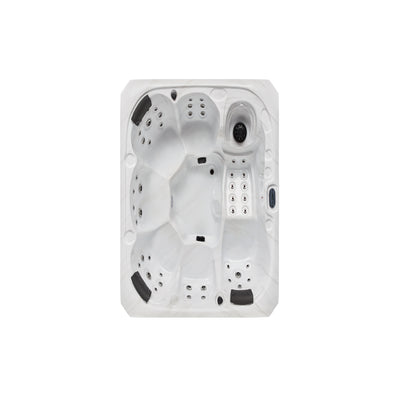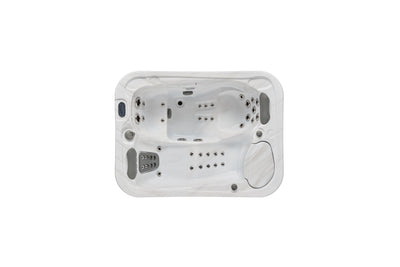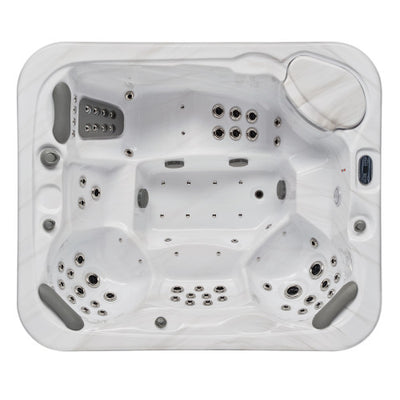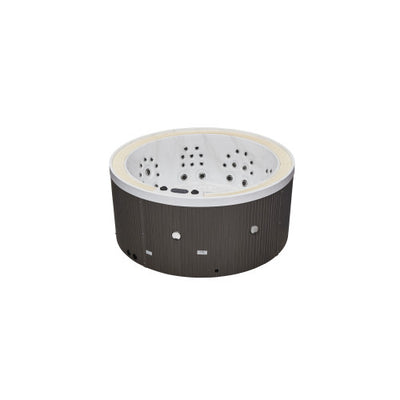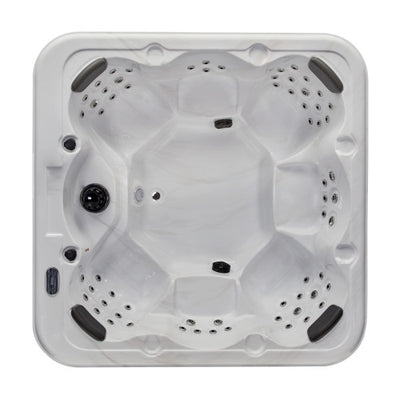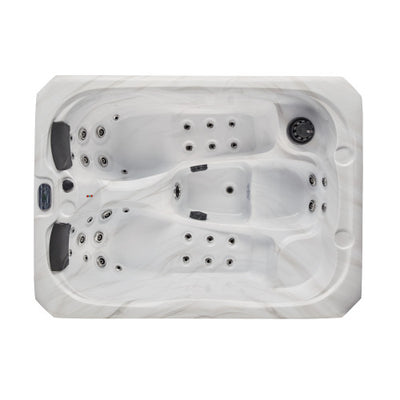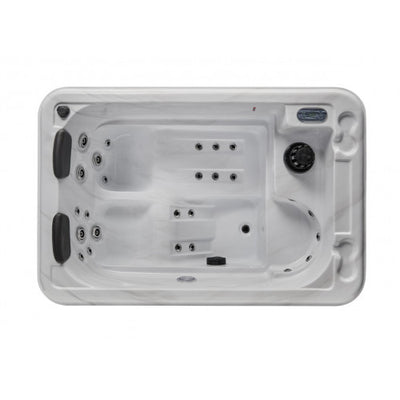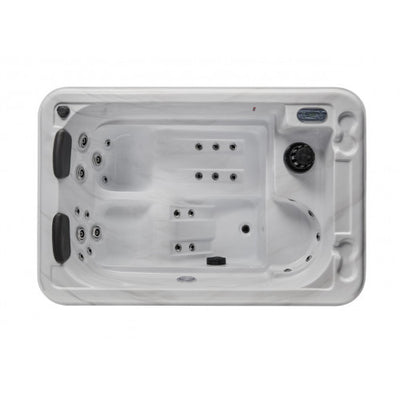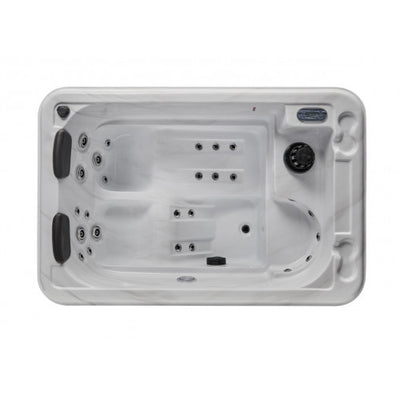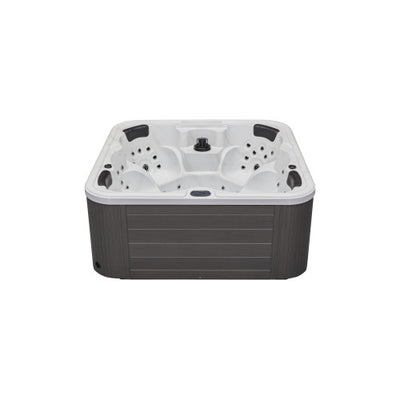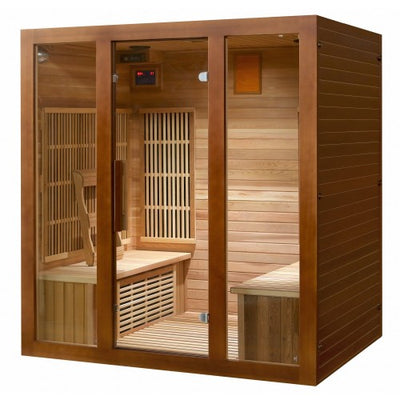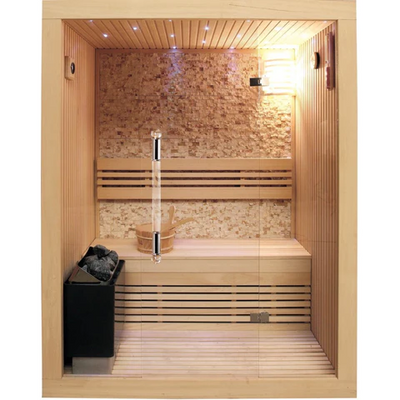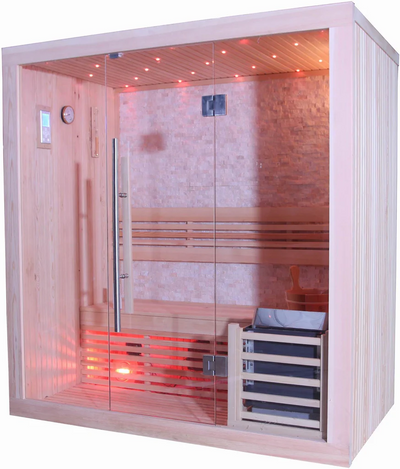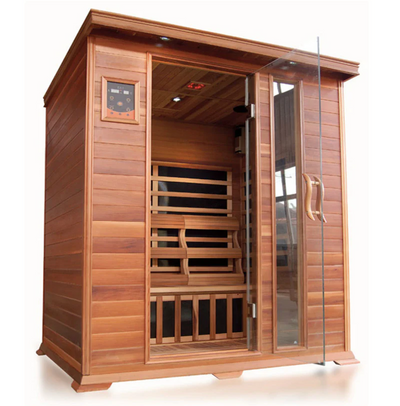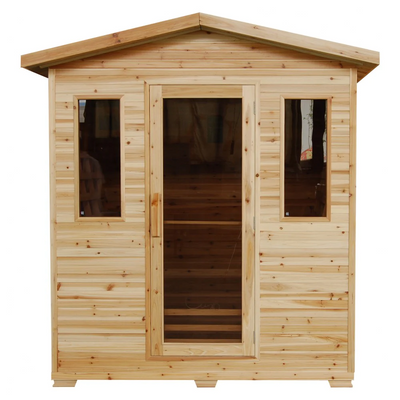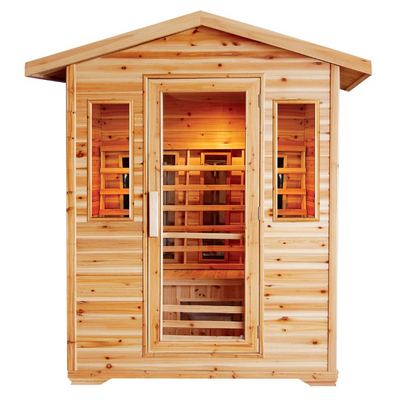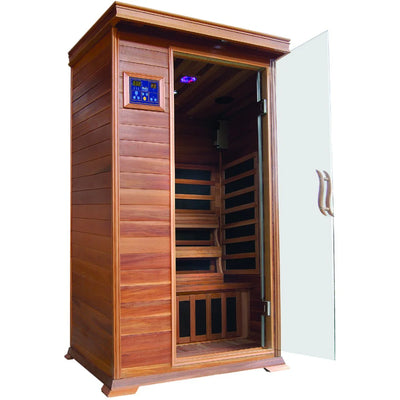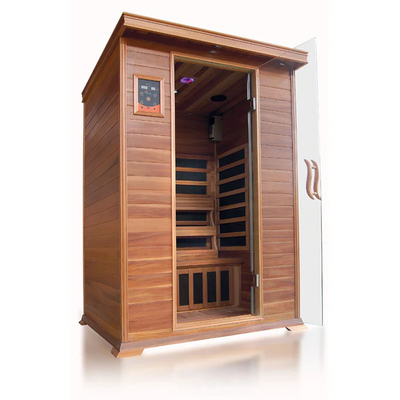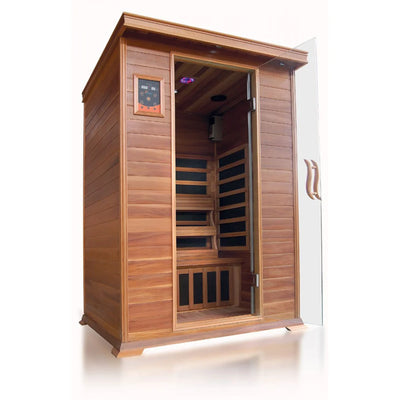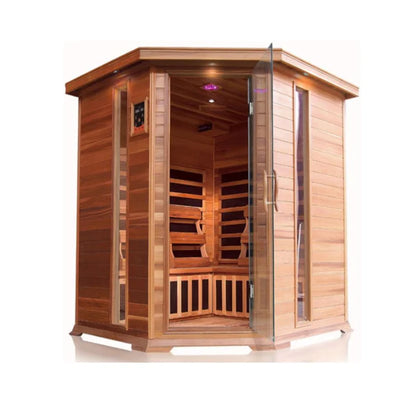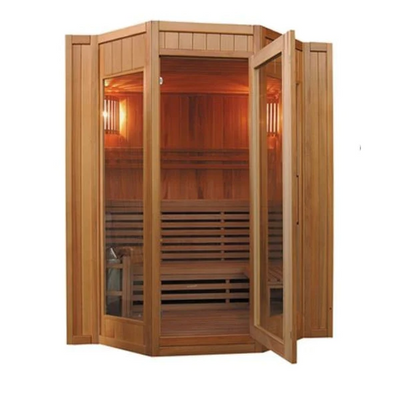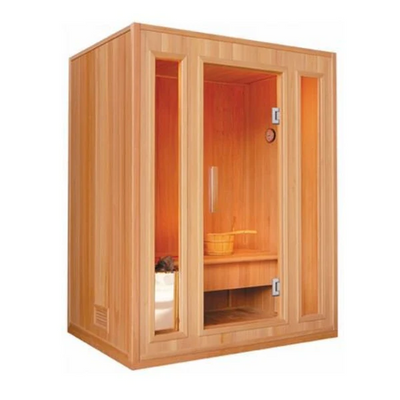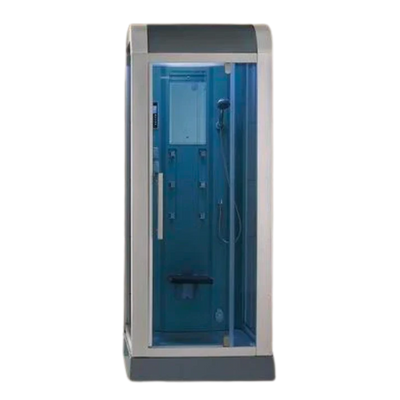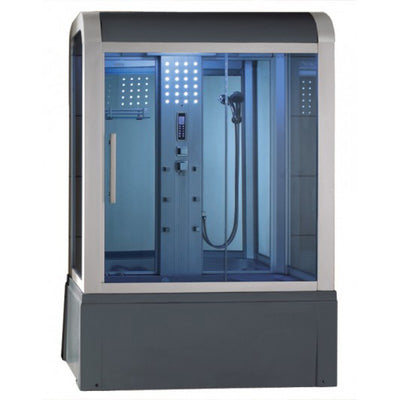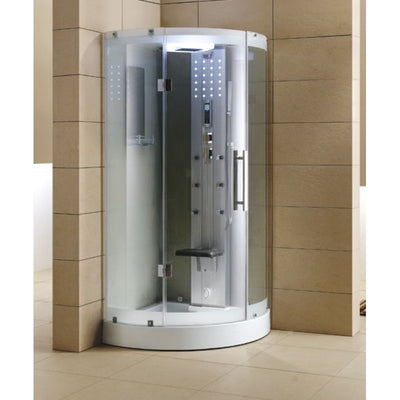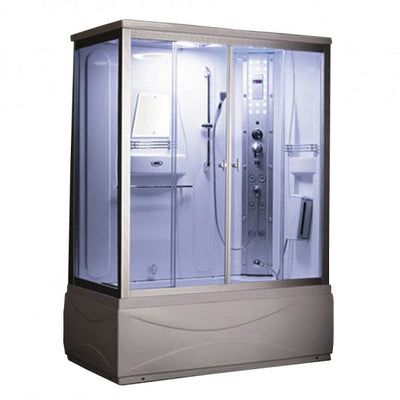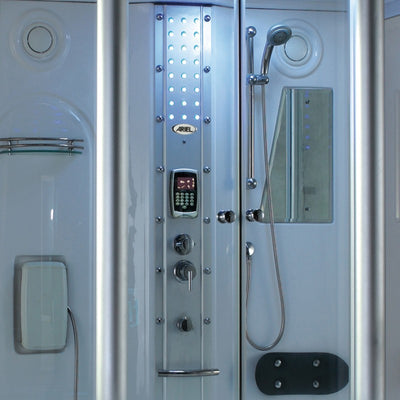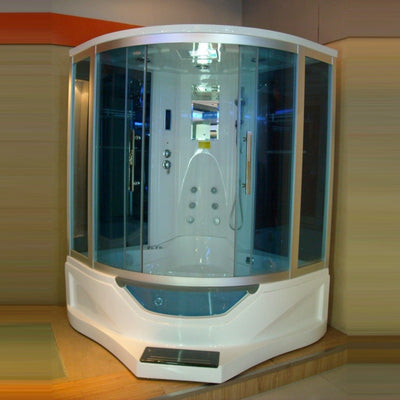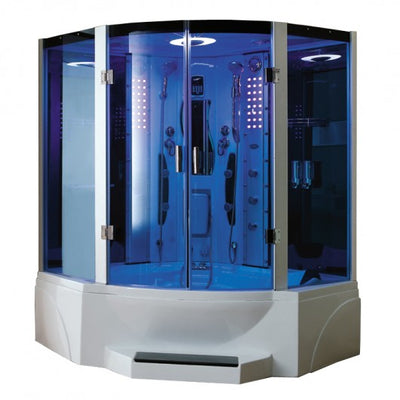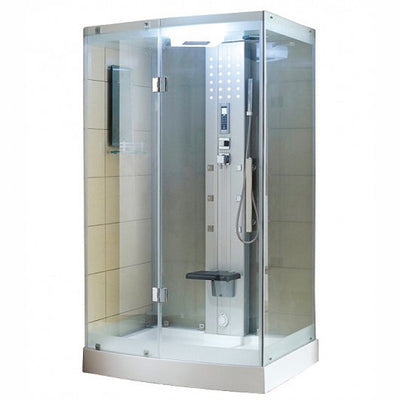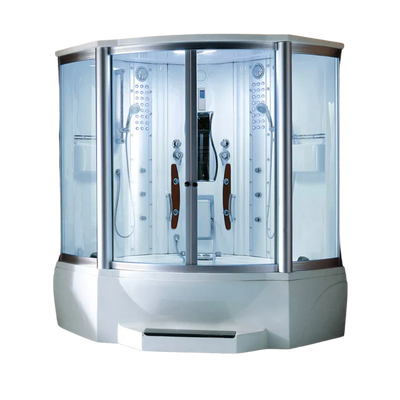Imagine stepping into a haven of warmth, where the day’s stresses melt away, and your body feels rejuvenated. This magical experience can be found in both saunas and steam rooms.
But how do you choose between these saunas and steam rooms?
Let’s explore the world of saunas and steam rooms, comparing their benefits and features, so you can find the perfect fit for your wellness routine.
Let’s start with the basics…
What is a Sauna?
A sauna is a small room designed to be heated to high temperatures, typically between 150-190 degrees Fahrenheit. Traditional saunas use a stove to heat the air and stones, which can then have water poured over them to create steam. Infrared saunas, on the other hand, use infrared light to warm your body.
How do Saunas Work?
- Traditional saunas heat the air to warm your body.
- Infrared saunas use infrared panels to emit light that heats the body directly.
Typical Uses of Saunas:
- Saunas are often used in spas, gyms, and homes.
- They are ideal for promoting relaxation, improving circulation, and detoxifying the body.
What is a Steam Room?
A steam room, also known as a steam bath, is a room that generates steam and maintains a high level of humidity, usually around 100%. The temperature in a steam room is typically lower than that of a sauna, ranging from 110-120 degrees Fahrenheit.
How do Steam Rooms Work?
- A steam generator boils water into steam, which is then released into the room.
- The high humidity and warm air envelop your body, creating a moist heat experience.
Typical Uses of Steam Rooms:
- Steam rooms are popular in spas, wellness centers, and homes.
- They are excellent for respiratory health, skin hydration, and overall relaxation.
What is a Steam Room?
A steam room, also known as a steam bath, is a room that generates steam and maintains a high level of humidity, usually around 100%. The temperature in a steam room is typically lower than that of a sauna, ranging from 110-120 degrees Fahrenheit.
How do Steam Rooms Work?
- A steam generator boils water into steam, which is then released into the room.
- The high humidity and warm air envelop your body, creating a moist heat experience.
Typical Uses of Steam Rooms:
- Steam rooms are popular in spas, wellness centers, and homes.
- They are excellent for respiratory health, skin hydration, and overall relaxation.
Benefits of Saunas
Health Benefits
Saunas detoxify the body through intense sweating and improve circulation by dilating blood vessels. The heat also relieves muscle soreness and joint pain by promoting blood flow and relaxing muscles.
Mental Benefits
Saunas reduce stress and promote deep relaxation in a tranquil environment. Regular use improves sleep patterns, helping you fall asleep faster and enjoy more restful sleep.
Specific Conditions Saunas Can Help With
Saunas are beneficial for arthritis, reducing joint pain stiffness, and chronic pain, easing muscle tension, and improving circulation. They also improve skin conditions by promoting blood flow and sweating out impurities.
Benefits of Steam Rooms
Health Benefits
Steam rooms offer various health benefits, particularly for the respiratory system and skin. The high humidity helps clear congestion, benefiting those with asthma, bronchitis, or allergies, and hydrates the skin, leaving it soft and supple while opening pores to remove impurities.
Mental Benefits
Steam rooms provide mental health benefits by creating a calming environment that reduces stress and promotes relaxation. The warm, moist air helps lower stress levels by easing muscle tension.
Specific Conditions Steam Rooms Can Help With
Steam rooms are beneficial for respiratory issues by clearing airways and reducing inflammation. They also help combat dry skin with high humidity and alleviate sinus congestion and discomfort for those with sinusitis.
Key Differences Between Saunas and Steam Rooms
- Temperature and Humidity Levels
Saunas: Typically have high temperatures and low humidity. The dry heat promotes intense sweating.
Steam Rooms: Have lower temperatures but 100% humidity. The moist heat creates a different, equally intense sweating experience.
- Types of Heat Used
Saunas: Use dry heat, either from an electric heater or a wood-burning stove. Infrared saunas use infrared light to heat the body directly.
Steam Rooms: Use moist heat generated by boiling water to produce steam, which is then pumped into the room.
- Personal Preference and Comfort
Saunas: Preferred by those who enjoy high temperatures and dry heat. They are ideal for deep muscle relaxation and detoxification.
Steam Rooms: Favored by individuals who benefit from high humidity and moist heat. They are particularly good for respiratory health and skin hydration.
Choosing between a sauna and a steam room ultimately comes down to personal preference and specific health needs.
Saunas provide dry heat that can help with detoxification, improved circulation, and muscle relaxation. They are ideal for those who enjoy high temperatures and a more intense heat experience.
On the other hand, steam rooms offer a moist heat that is excellent for respiratory health, skin hydration, and stress relief. The high humidity and lower temperatures create a soothing environment that many find beneficial for optimal relaxation.
Both saunas and steam rooms have their unique benefits, and incorporating either into your wellness routine can significantly enhance your quality of life.
Whether you're looking to relieve stress, improve your skin health, or enjoy a relaxing retreat at home, there's a perfect option for you.










